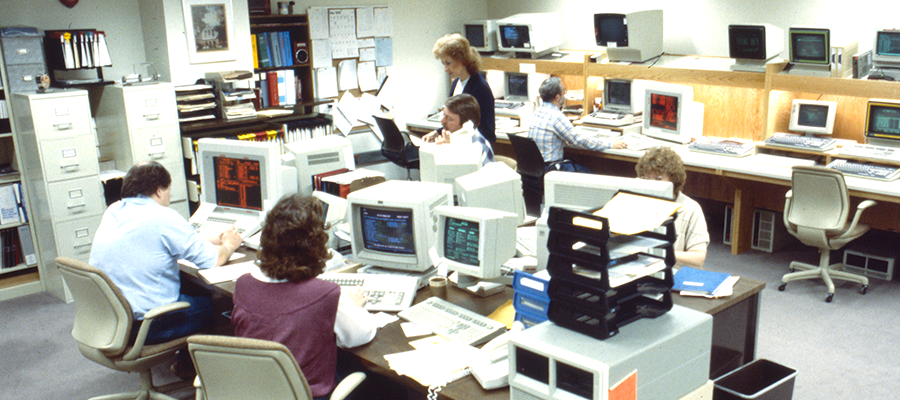A message from Lois Brooks, vice provost for information technology and chief information officer:
I’ve been thinking about the history of technology lately. As I’ve watched advancements in artificial intelligence move at a breathtaking pace in the past year or so, I can’t help but recall the excitement and uncertainty that accompanied other technological revolutions.
As technologists, we’ve not only had front-row seats to those transformations, we’ve had backstage passes (and, at the risk of overdoing the metaphor, we’ve also frequently built the stage and sewn the costumes). In the Division of Information Technology, we’re marking our 30th anniversary this year, and it’s been remarkable to look back over how much technology has changed in the last 3 decades—and how it’s changed all of us in the process.

30 years ago, we used CD-ROMs for storage and dial-up modems to connect to the World Wide Web (created only 3 years before). We carried pagers and PDAs to stay connected on the go and worked on bulky, desk-bound computers that came with Windows 3.11 and MS-DOS 6.2 installed. Household names like Yahoo!, Amazon and T-Mobile were just getting started. At UW–Madison, we had just begun giving all students email access and had recently reshaped class enrollment by introducing a way to register by touchtone telephone.
Fast-forward to today and technology has fundamentally reshaped how we teach, learn and work. To choose 1 example: the wireless network—first available in university libraries in 2000 and campuswide by 2006—profoundly changed the daily lives of students and employees by untethering us from our desks and putting a previously unimaginable amount of information within near-instant reach. Students can now attend virtual lectures, access notes and course materials from anywhere, and collaborate on projects with peers around the world.
What now seems routine and impossible to live without was once a new, uncertain and exciting technological innovation. Bringing about this era of flexible virtual teaching, learning and working at UW took a lot of investment and effort by networking engineers and other technologists across our campus—work that is ongoing as we continue to enhance online experiences for all Badgers.
More examples are everywhere you look. The MyUW platform, the central hub for UW’s digital campus services, was a revolutionary new idea when it was launched in 2001 (many of our peer institutions subsequently adopted the platform with our support). WiscNet, a nonprofit research and education network that connects educational and community institutions across Wisconsin, started here in the 1980s and has had a substantial impact on this state.

Innovation is a constant for us in higher education IT, and I’m proud that UW–Madison has helped lead the way—not only in advancing new technologies but also as thought leaders grappling with important questions about privacy, security and digital equity. Our teams continue to navigate complex issues around data governance, cybersecurity, accessibility and the digital divide to help ensure that everyone in our community can benefit from these new resources and tools.
We innovate because the work of this university is never complete. The technologies we support make possible the university’s mission to educate our students, search for new discoveries, and influence people’s lives beyond the boundaries of the classroom. When UW–Madison makes advancements, the university’s IT professionals are right there, behind the curtain, making sure everything goes off smoothly. As I think back on the changes we’ve witnessed in IT in recent decades, I am excited to see the technological advancements yet to come for future generations.
— Lois
